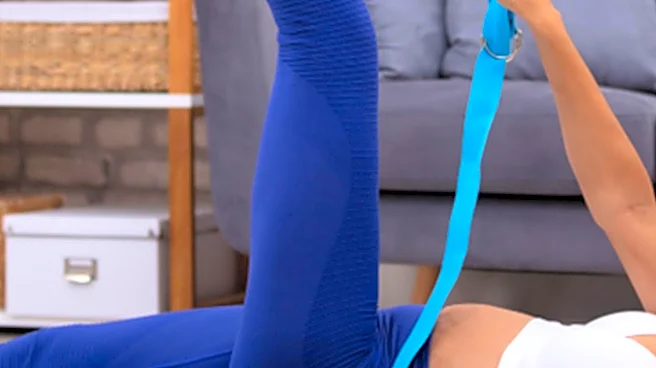What is the story about?
What's Happening?
Dr. Christynne Helfrich, a doctor of physical therapy at Hinge Health, emphasizes the benefits of walking for individuals suffering from chronic pain. Helfrich notes that walking is an accessible form of exercise that can help alleviate pain symptoms and improve mobility without the need for expensive equipment. She suggests that even short walks, as brief as five to ten minutes, can be beneficial and help counteract the effects of a sedentary lifestyle. Walking releases endorphins, which can serve as a natural pain reliever, offering an alternative to medications that may not always be effective. Helfrich advises breaking down movement into small, manageable segments throughout the day to encourage blood flow and enhance mobility.
Why It's Important?
The recommendation to incorporate walking into daily routines is significant for those with chronic pain, as it provides a low-impact, cost-effective method to manage symptoms and improve quality of life. Walking can help break the cycle of inactivity that often leads to increased pain and stiffness. By promoting movement, individuals can gradually build their exercise tolerance, potentially reducing reliance on pain medications. This approach not only benefits physical health but also supports mental well-being, as physical activity is known to reduce symptoms of depression and anxiety, which often accompany chronic pain conditions.
What's Next?
Individuals with chronic pain are encouraged to start with short, manageable walks and gradually increase their duration and intensity as their tolerance improves. Helfrich suggests setting achievable goals, such as walking to a nearby location, to maintain motivation and track progress. This incremental approach can help individuals safely increase their activity levels without triggering pain flare-ups. As more people adopt walking as a form of exercise, healthcare providers may increasingly recommend it as part of a comprehensive pain management strategy.
Beyond the Headlines
Walking as a therapeutic exercise highlights the importance of accessible and sustainable health interventions. It underscores the need for healthcare systems to promote lifestyle changes that empower individuals to take control of their health. This approach aligns with broader public health goals of reducing healthcare costs and improving population health outcomes by encouraging preventive measures and self-care practices.
AI Generated Content
Do you find this article useful?













